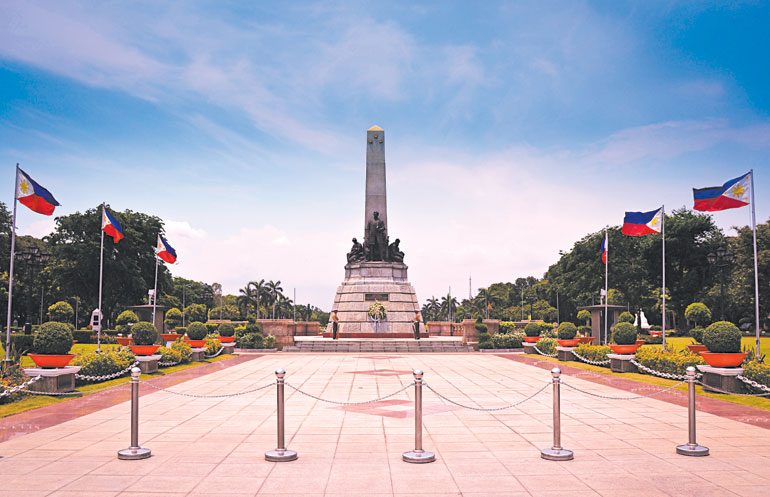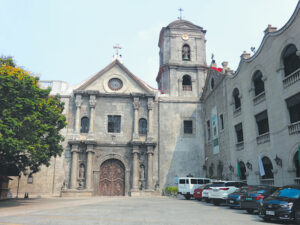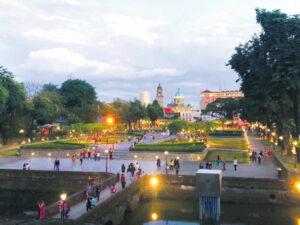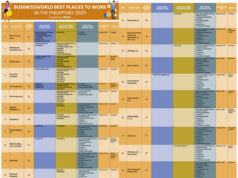The development journey of the country’s capital

Today, June 24, the people of Manila celebrate the 451st founding anniversary of the historical city. Malacañang declared this day a special non-working holiday in the capital to give residents and tourists a chance to step into the beat of a city steeped in history.
During a month-long celebration, with mega job fairs, a running marathon, inauguration of newly-restored historical markers, float parade, gala concert and street dance competition, the city invites everyone to see the sights of its landmarks, listen to its music, and feel the hospitality of its people.

Originally named Maynilad, Manila is derived from the plant “Nilad” (Scyphiphora Hydrophyllacea), a flowering shrub adapted to marshy conditions which once grew abundantly along the riverbanks. In a Facebook post, the National Museum shared that this is the most popular theory of the etymology of the city’s name. But for some, the nilad plant is not just a cultural icon but a representation of Manila’s journey from a budding plant that traces its roots to once again bloom and be visible to the rest of the world.
The city serves as a melting pot of cultures as it displays the best of Filipino traditions and mixes it with Spanish, American and Asian influences brought by colonizers. One of East Asia’s oldest cities, Manila traces its written history to 1571 when Spanish conquistadors, led by Miguel Lopez de Legazpi, fought for control over the city from its pre-Hispanic ruler, Rajah Sulayman.
According to Encyclopedia Britannica, Legazpi found a Muslim community in Manila and had it destroyed and replaced it with Intramuros, a walled city. Outside the city walls stood some scattered villages, each ruled by a local chieftain and each centered on a marketplace. As Spanish colonial rule became established, churches were built near the marketplaces, where the concentration of population was greatest. Manila spread beyond its walls, expanding north, east, and south, linking together the market–church complexes.
Centuries later, Spain and the United States fight over the Philippines, and it fell into the hands of the latter who help the country on social and economic improvement. The US policy established the first public schools in Manila and later throughout the archipelago.

However, after decades, Manila underwent the horrors of World War II. Under the Japanese Occupation, the city laid in ruins and the only building left intact was the San Agustin church.
Britannica describes Manila in a state of total disorder when it became the country’s capital in 1946. Yet, it managed to rebuild with the help of the United States. However, in 1948, Quezon City was declared the new capital and held the post for nearly three decades. But in 1976, Manila again became the capital and the permanent seat of the national government.
With freedom in effect, the sprawling metropolis of booming businesses, arts and culture is now poised to once again reclaim its position as one of the preeminent cities of Asia.
According to the Philippine Statistics Authority, it had a population of 1.84 million in 2020; second to the list of highly urbanized cities (HUCs) in the National Capital Region.
On top of that, Manila attracts over one million tourists each year. Some of the most visited destinations are the walled city of Intramuros, Rizal Park, Manila Zoo, Chinatown, the Minor Basilica of the Black Nazarene, and a diverse set of museums.

Tourism is a major industry in the district. The walled city of Intramuros houses several well-known universities and some of the most historic structures in the country, such as Fort Bonifacio, San Agustin Church and Manila Cathedral. The oldest Chinatown in the world can also be found in Manila, where Filipino-Chinese entrepreneurs set up their homes and businesses.
As a major economic center home to many commercial establishments, Manila serves as the headquarters of industry leaders, including major publishing companies and maritime terminals.
Port of Manila, the largest seaport not only in Luzon but in the entire Philippines, is located in northwestern part of the city’s bay area. United Kingdom’s leading experts in shipping tagged it as the oldest, busiest and one of the most important ports in the entire southeast Asian region for its vital trade link between the Far East and South America, making it the premier international shipping gateway of the country.
In the Cities and Municipalities Competitive Index 2021, the City of Manila continued to dominate the rankings of the most competitive local government unit in the country after Quezon City, in terms of dynamism, government efficiency, infrastructure and resilience.
On the commemoration of the establishment of Manila, city officials inspire all Manileños to trace their roots back on the valor of Filipinos that flourished despite the darkness of times, for new seeds of generation to uphold lasting progress and peace in the country. — Allyana A. Almonte



